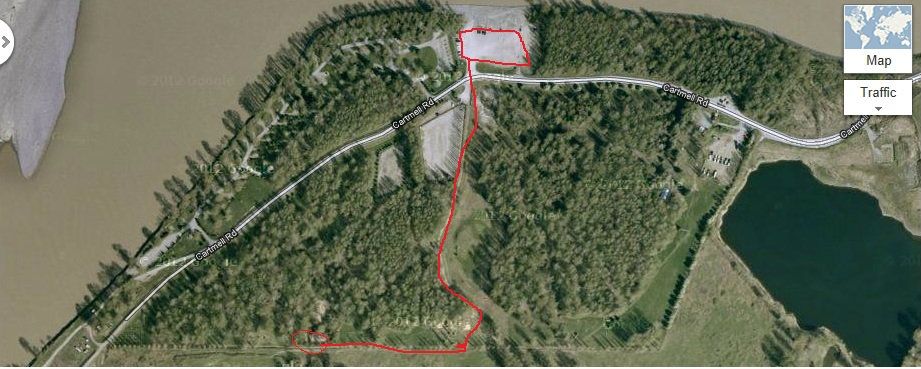Post by Gord on Aug 8, 2014 23:24:16 GMT -8
This afternoon at Island 22 around the area we call The Triangle (located in the southwest corner of the park) it was fairly birdy. Two American Redstarts, including a young male without a tail, were nice to see. The other was a female or young bird. A scattering of Wilsons Warbler, a Yellow Warbler, MacGillvray's Warbler, Red-eyed Vireo and Pacific-slope Flycatchers etc were among quite pugnacious Western Wood Pewee.
But of course the most exciting discovery was a Blackburnian Warbler. When I first spotted I was quite amazed at the orange on the face and throat. White wing bars were very apparent. I watched it over about a 10 minute period as it, unfortunately, worked its way higher and higher into the tree canopy. I saw it in various light levels and yes indeed it was orange on the head, throat and upper breast with the throat the most bright. It is certainly not yellow but not the bright flame orange of an adult male as seen in the field guide either. The rest of the bird from below was pale and nondescript with very faint and sparse markings. Size and structure wise I got a Blackpoll Warbler feel from it if I had to draw a comparison with warblers I'm familiar with. It made a few call notes and to me sounded similar to the Townsend's Warbler. I was able to see it many more times with an objective eye to rule out any other species or that I was not seeing things clearly. This is either an adult female or young male Blackburnian by my best guess. I was deeply disappointed that I was not able to get a photo of it for documentation. Each time I got a look at it and tried for the camera it would get lost in the leaves again. I fired a few in hopes but got nothing but leaves. A sight record with field notes will have to do unless myself or someone else gets lucky tomorrow.
Despite being surprised by such a sighting of this Eastern warbler at any time of year, I definately would not have expected to run into such a wanderer this early in migration. While impossible to say the circumstances around this bird's presence, one usually expects to find such species so far from home to show up at the end of August and through to October and even early November (Great Crested Flycatcher comes to mind as an recent example).
I will be trying tomorrow morning before work. If anyone wants to try they are welcome to join me. Ill be the guy looking hopefully up in the trees. Sorry for the lateness of sharing. It's a bit hectic of late. I'm not complaining in the least about my find but it was at a bit of an inconvenient time.
But of course the most exciting discovery was a Blackburnian Warbler. When I first spotted I was quite amazed at the orange on the face and throat. White wing bars were very apparent. I watched it over about a 10 minute period as it, unfortunately, worked its way higher and higher into the tree canopy. I saw it in various light levels and yes indeed it was orange on the head, throat and upper breast with the throat the most bright. It is certainly not yellow but not the bright flame orange of an adult male as seen in the field guide either. The rest of the bird from below was pale and nondescript with very faint and sparse markings. Size and structure wise I got a Blackpoll Warbler feel from it if I had to draw a comparison with warblers I'm familiar with. It made a few call notes and to me sounded similar to the Townsend's Warbler. I was able to see it many more times with an objective eye to rule out any other species or that I was not seeing things clearly. This is either an adult female or young male Blackburnian by my best guess. I was deeply disappointed that I was not able to get a photo of it for documentation. Each time I got a look at it and tried for the camera it would get lost in the leaves again. I fired a few in hopes but got nothing but leaves. A sight record with field notes will have to do unless myself or someone else gets lucky tomorrow.
Despite being surprised by such a sighting of this Eastern warbler at any time of year, I definately would not have expected to run into such a wanderer this early in migration. While impossible to say the circumstances around this bird's presence, one usually expects to find such species so far from home to show up at the end of August and through to October and even early November (Great Crested Flycatcher comes to mind as an recent example).
I will be trying tomorrow morning before work. If anyone wants to try they are welcome to join me. Ill be the guy looking hopefully up in the trees. Sorry for the lateness of sharing. It's a bit hectic of late. I'm not complaining in the least about my find but it was at a bit of an inconvenient time.






